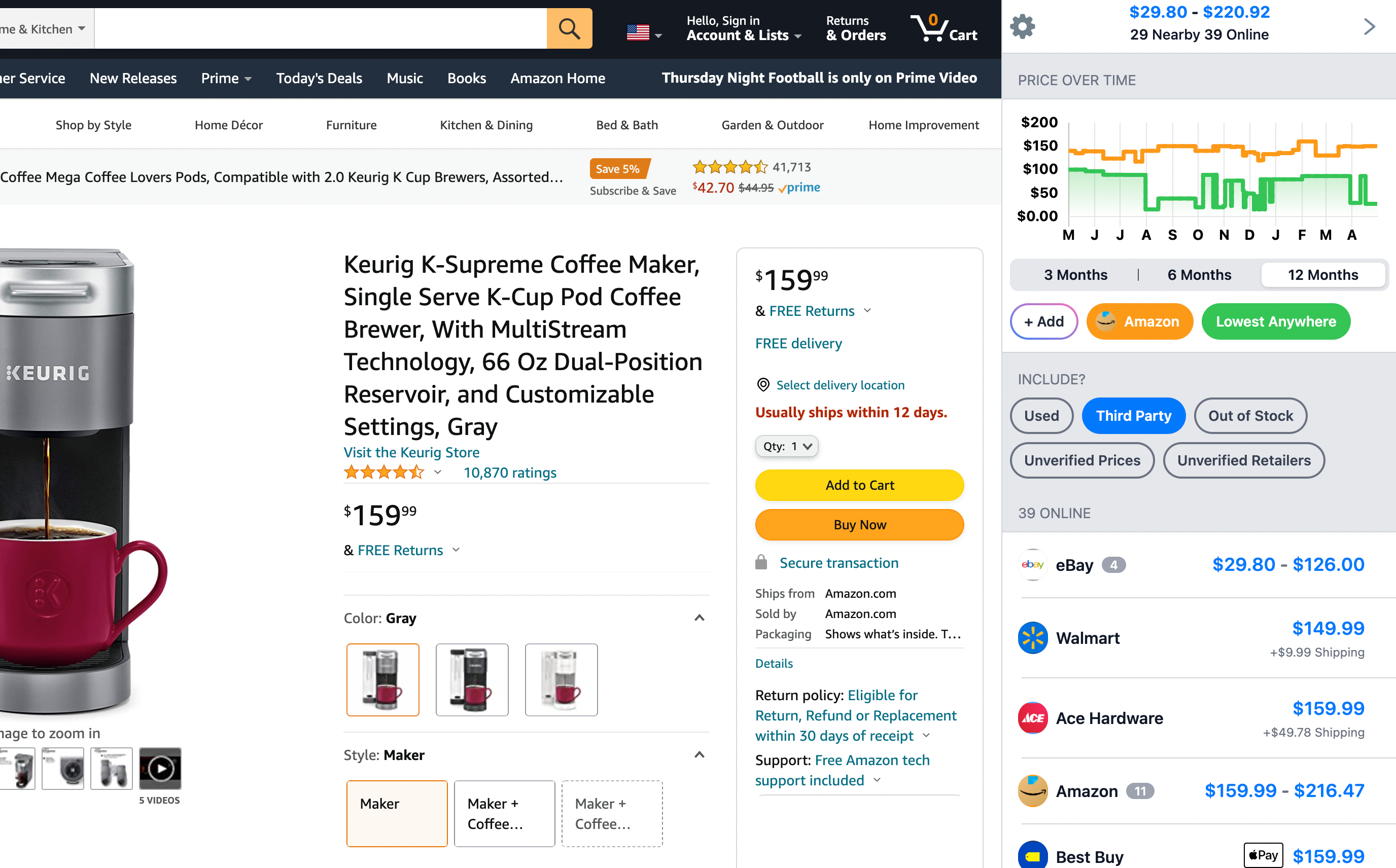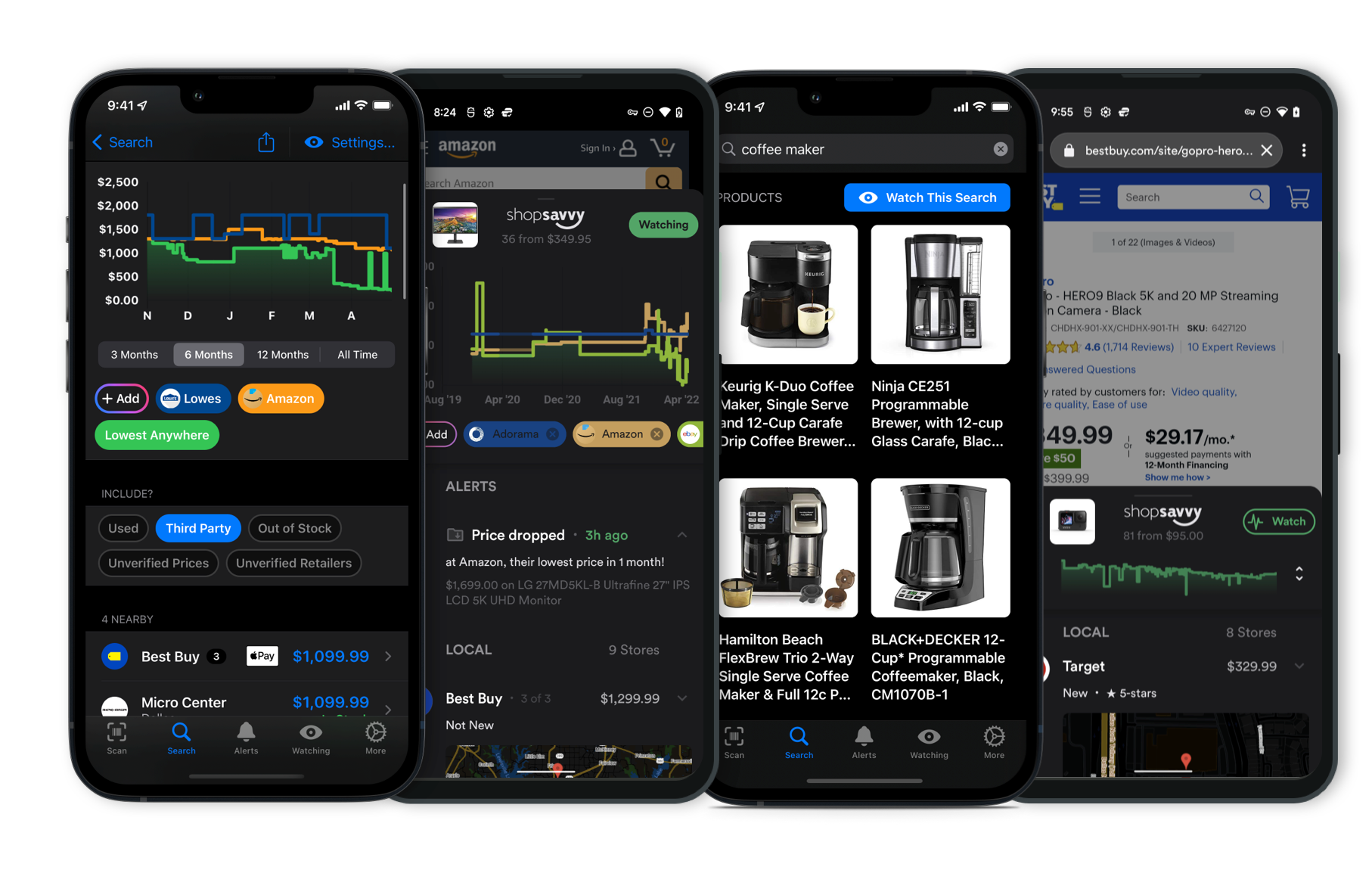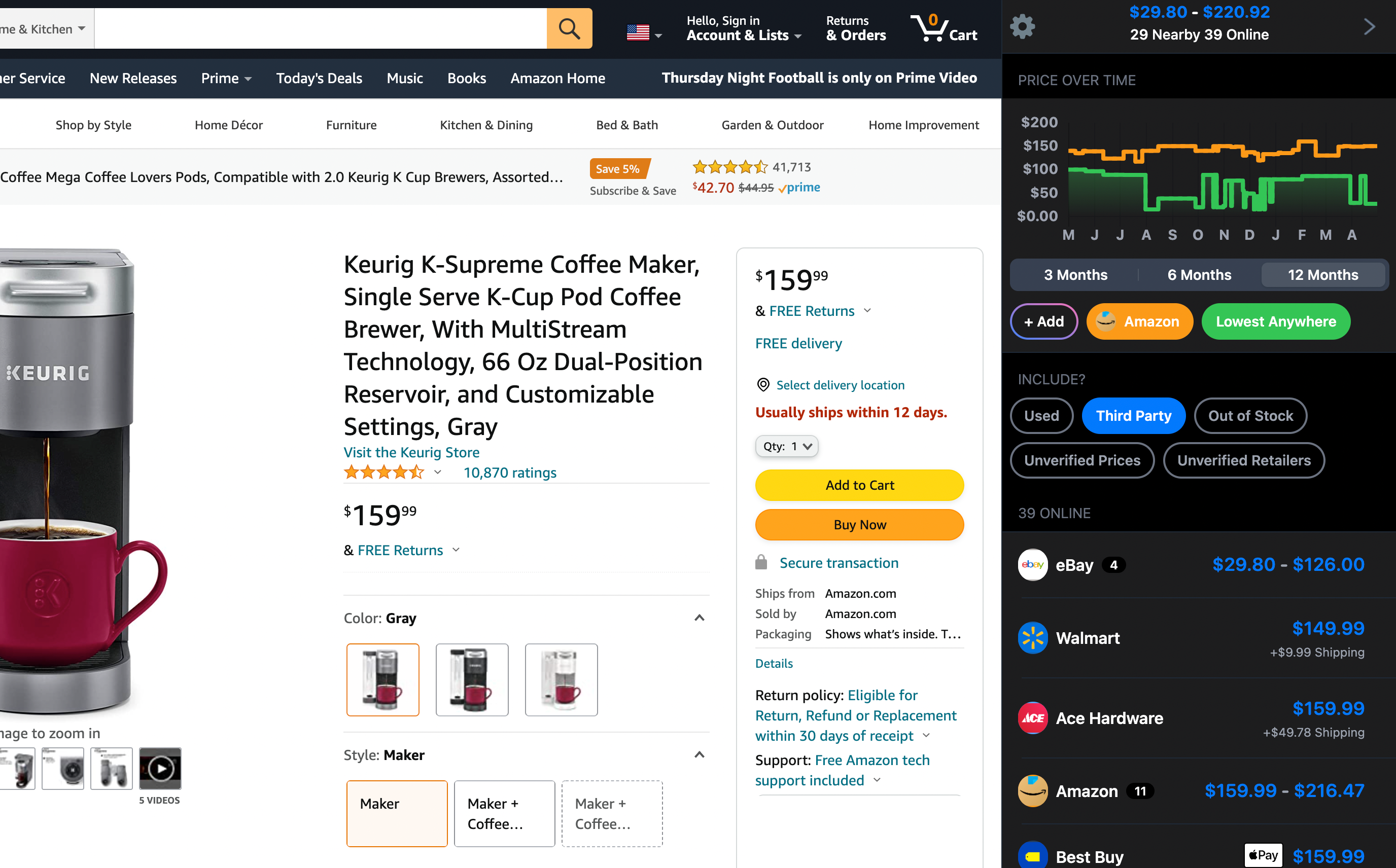Latest Answers about Audio Equipment
Setting up the Sonos Sub Mini is designed to be pretty straightforward and fits neatly into the Sonos ecosystem. The manufacturer and our research both confirm that it's meant to seamlessly work with Sonos soundbars like the Beam or Arc.
So, if you're looking to boost your bass without getting tangled in a complex setup, this should do the trick.
One thing to keep in mind, though, is that the Sub Mini is a solo act—you can't connect two of them together for extra bass. It's built for enhancing sound depth with just one unit. If you're thinking about doubling up for more bass, you might want to consider the larger Sonos Sub, which does allow multiple connections.
Getting the Sub Mini up and running involves adding it to your Sonos system through their app. The whole process is pretty user-friendly, so you won't be stuck fiddling around for ages. Just follow the prompts, and you should be all set.
The Sub Mini is great for medium to smaller rooms, adding a nice touch of low-end sound right where you want it. Based on our data from various experiences, it pairs especially well with a soundbar like the Sonos Arc, giving a noticeable boost to your audio setup.
So, if you're looking for an easy setup and a solid addition to your Sonos gear, the Sub Mini is a good bet.
But if you're after that expansive sound with a dual subwoofer setup, you might need to explore other options in the Sonos range.
So, wondering about the sound on the Logitech Pure-Fi Anywhere 2? According to our research, it delivers quite a punch for its size. People seem to really like the robust and clear sound it puts out. It's portable, but still manages to surprise with its powerful audio output.
The manufacturer's design includes high-excursion drivers, which helps to achieve a rich sound experience. Our data indicates that the treble and midrange frequencies come through nicely, and the bass is pretty substantial, though it might not satisfy those who crave really deep bass like you’d get from bigger, non-portable speakers.
Oh, and another cool thing—this speaker can charge your iPhones and iPods when plugged into an AC outlet. That's handy, right?
Just remember, it won't charge them if it's not plugged in, so keep that in mind if you're planning to use it unplugged a lot.
We did find a few quirks, like the speaker shutting off during low volumes or pauses. It's actually an energy-saving feature, meant to conserve battery life, but it could be a bit annoying if you're not expecting it.
All in all, the Logitech Pure-Fi Anywhere 2 strikes a nice balance of portability and solid sound. Just something to consider if deep bass or continuous charging is important for your setup.
So, if you're thinking about using the RODE Wireless PRO for live streaming, here's the scoop based on our research.
The RODE Wireless PRO comes with some pretty neat features like 32-bit float onboard recording and dual-channel capabilities. It's also got advanced audio synchronization with timecode, which is awesome for capturing high-quality audio.
But if we're talking live streaming, there are a couple of things to look out for. One of the main points is that the microphone tends to pick up ambient noise because of its omnidirectional design. This means it captures sound from all directions, which can be great in some situations but maybe not so much if you're trying to focus just on your voice during a live stream.
Another thing to note is the setup. It involves software called RODE Central, and some folks found it a bit tricky, especially if you want to tweak settings on the fly during a stream. The process might need a computer for certain adjustments, which could be a hassle if you're streaming live and need to make quick changes.
Despite these things, with a little prep work, you can still get great sound from the RODE Wireless PRO, especially in a controlled environment where you can manage background noise and have time to set it up beforehand.
But if live streaming is your main gig, you might want to check out other options that are tailored for real-time control and easier setups.
So, in a nutshell, the RODE Wireless PRO is awesome for various audio tasks, but it shines best when you can control the recording environment. Matching your gear to what you specifically need is crucial, so it might take some experimentation to see if this system is your live streaming match.
When you're looking at the Sennheiser MKE 600 and the Rode VideoMic, it really comes down to what you need for your video projects since both have their own strengths.
Design and Build Quality
The Sennheiser MKE 600 is a shotgun mic known for being very versatile. It’s good at picking up sound from right in front of it while cutting out background noise from the sides and back, at least according to the manufacturer. This makes it handy for video shoots when you want audio to be nice and clear, whether it’s sitting on your camera or on a boom pole.
Plus, it's pretty solid and reliable from what our research says.
On the flip side, the Rode VideoMic series is known for being small and light, which is perfect if you’re doing handheld or fast-paced shooting. Rode seems to have nailed the balance between staying portable and still offering decent sound, so it's great for solo creators and vloggers.
Sound Quality and Performance
Based on our research, the MKE 600 is great for getting pro-style audio, especially when you need to keep background noise under control. Its focus on picking sound from directly in front helps make the audio crisp, which is super important for video work.
The Rode VideoMic also delivers good sound but tends to be easier to use and more versatile. It’s a go-to if you're not an audio whiz but still want clear sound. It works well in different settings without much fuss.
Battery and Setup
The Sennheiser MKE 600 gives you the option of using phantom power or AA batteries, which is pretty flexible depending on how you’re shooting. This is useful on longer shoots where you need to manage power.
Meanwhile, the Rode VideoMic usually runs on a standard battery, which makes for quick setup changes and means you don’t need extra gear like a phantom power supply. That’s handy for beginners.
Price and Value
Price-wise, the Sennheiser MKE 600 tends to be more expensive than most Rode VideoMic models. But if you need top-notch audio and your projects need that professional sound quality, it might be worth the extra cost.
In the end, both microphones have something to offer. If your focus is on getting high-quality audio in more controlled environments, the MKE 600 is a great pick.
If you need something portable and easy to handle, the Rode VideoMic could be the way to go. According to our research, both have earned positive feedback for their specific strengths, providing great value for what they’re meant to do.
If you're thinking about adding the Sonos Sub to your setup, it's generally pretty easy, especially if you’re already using Sonos speakers or Sonos soundbars. It's a wireless subwoofer that works within the Sonos ecosystem, so you just need your Wi-Fi and the Sonos app for the initial setup.
From our research, many find the setup quite straightforward. You typically just follow some simple steps in the app to pair the Sub with your existing Sonos devices. Once it's connected, it should blend right in and give your system a nice boost in bass, whether you're listening to music, watching movies, or gaming.
That said, a few people have run into some hiccups. Some folks have had to manually input serial numbers or had trouble getting the Sub to recognize other devices. There are also occasional drops in connectivity, which might mean you’ll have to redo parts of the setup.
One of the cool things about the Sonos Sub is its wireless design, which means you can plop it anywhere in the room where it sounds best. Just play around with different spots to see where the bass really pops.
A note though—since the Sub is designed to work only with Sonos products, you won't find a traditional audio input jack. So, if you've got a mix of audio gear, keep in mind that it won't connect to non-Sonos stuff.
If you're already in the Sonos world, the Sub can be a great addition for richer bass and improved sound experience. It's sleek and powerful, but do consider the cost and ensure it fits with your current audio setup before buying.
The RØDE PSA1+ is pretty solid if you need a boom arm for your microphone. According to the manufacturer, it can handle microphones weighing between 0.2 and 2.7 pounds. So, it'll work for a bunch of different mics, including something like the Shure SM7B.
This arm is designed with podcasters, streamers, and broadcasters in mind, which is nice if you're switching up your recording setup often. It supports both end- and side-address microphones. Plus, it comes with both a 3/8-inch and a 5/8-inch thread adapter, so compatibility won't be an issue.
A cool feature noted in our research is the parallelogram spring design, making adjustments smooth and quiet. Super helpful if you need to move the mic mid-session without picking up unwanted noise.
There's also a cable management system for USB and XLR cables that keeps your workspace tidy and avoids any cable stress.
And from what we found, the PSA1+ does a great job keeping your mic steady, which means no wobbling around. It's definitely a solid option if you want to keep your recording quality consistent.
The RØDE PSA1+ is built to be quiet when you're adjusting it, which is super helpful in recording settings where you want as little noise as possible. Compared to the older version, the PSA1, this newer model has some nice tweaks that make it quieter. The manufacturer says this comes from some clever design features like damped internal springs wrapped in neoprene and a parallelogram spring design.
Our research backs this up, showing that it moves smoothly and lets you place your mic just right without much noise. It's pretty popular for things like podcasts and streaming where clear audio is a big deal. RØDE really highlights this quiet operation in their features, and it lines up with some stuff we're seeing in reviews.
That said, there have been a few mentions of tiny noises, like ticking sounds, if the arm has been used a lot. These seem to be quite rare and might have more to do with individual setups or wear and tear rather than a problem with the design.
It's probably a good idea to check and tighten things every so often if you hear any odd noises down the line.
So, if you're on the lookout for a mic arm that doesn't add extra noise to your recordings, the PSA1+ seems like a solid choice. It's gotten good feedback from folks in audio and video circles because of its noise-reducing features.
If you're upgrading from the older model or dealing with a noisier arm, this could be a worthy pick, according to what we've found.
How does the sound quality of the Anker Soundcore 2 compare to other speakers?
The Anker Soundcore 2 has pretty solid sound quality, especially for its price. But when it comes to navigating through tracks, it does have a bit of a letdown.
According to our research, a lot of Bluetooth speakers allow you to skip forward or backward directly using the hardware controls—something you often even get with basic wired headphones. The Soundcore 2 doesn't quite hit the mark here.
You can skip forward by double-pressing the play button, but there's no way to skip backward using the speaker itself, which is a bit of a bummer. This isn't mentioned in the user manual, which can be frustrating too.
Some folks we've found are particularly annoyed by this, although others don't see it as a big deal and still think the speaker's other features make up for it.
If being able to navigate tracks directly from the speaker is a must for you, you might end up needing to use your phone or look into a different speaker.
In terms of sound, though, the Soundcore 2 does a great job, just keep the navigation thing in mind.
The Anker Soundcore 2 has some pretty interesting features aimed at boosting bass, like its BassUp technology, which the manufacturer says makes low-end sounds richer using a patented spiral bass port. This can be particularly noticeable if you're into genres like hip-hop or EDM.
From our research, the Soundcore 2 seems to hold its own in terms of bass when compared with similar speakers, particularly those in the same price range. For instance, TechRadar mentions that it delivers better bass than many of its competitors, though it does fall short of pricier options like the JBL Charge 3.
Some feedback from our research suggests the bass can feel a bit weak at higher volumes or in noisy places.
Overall, most folks seem to appreciate the BassUp technology for enhancing the bass. People generally find the Soundcore 2's bass and mid-range pretty good, especially considering its compact size.
Just keep in mind that while some users think the bass improvement is enough, others feel it doesn't go as deep as they'd like. One person even noted that the bass is noticeable but not substantial, which might be a dealbreaker if you're looking for really heavy bass.
So, if you're after better bass without breaking the bank, the Anker Soundcore 2 could be a good choice, but whether it meets your bass expectations might depend on your specific needs and how it compares to other bass-heavy speakers.
How does the sound quality of the Bose SoundLink Max compare to other Bose speakers?
The Bose SoundLink Max has a reputation for great sound quality. Our research highlights its rich, clear sound and strong bass, making it a solid choice for a portable speaker.
But there are a few things to keep in mind when stacking it up against other Bose speakers like the SoundLink Flex or SoundLink Revolve+ II.
One key limitation is that the SoundLink Max doesn't support stereo pairing with other Bose speakers, so you can't link two of them for true stereo sound or integrate it into a bigger Bose setup. This is something other models offer, and it's a feature some people miss.
On the plus side, it does have multipoint Bluetooth, so you can connect two devices at once and easily switch between them.
All in all, while the SoundLink Max performs well, the lack of stereo pairing is a drawback that some folks find disappointing.
 Download ShopSavvy App
Download ShopSavvy AppCompare prices for anything in real-time, set price alerts, watch for deals by keyword, and much more
 Install ShopSavvy Browser Extension
Install ShopSavvy Browser ExtensionCompare and track prices automatically while you shop online at thousands of websites.
Footer 1
Published
Subscribe for Updates
Get the latest news, and updates on ShopSavvy. You'll be glad you did!





